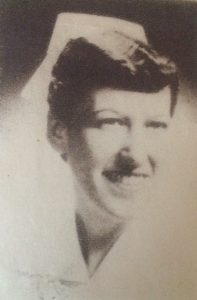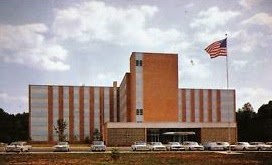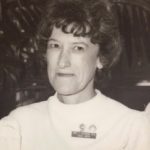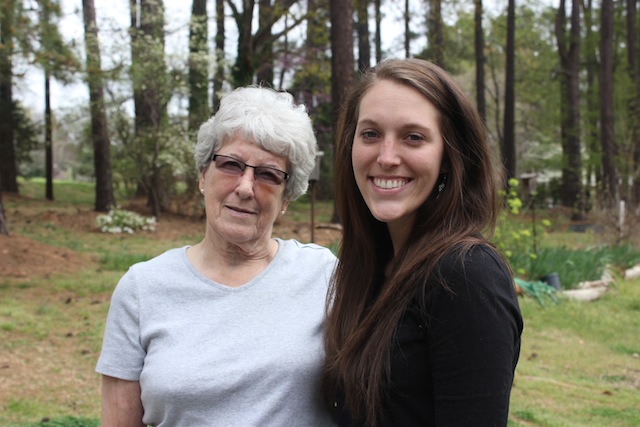This week is National Nurses Week, a time when we take the opportunity to honor and express our gratitude for those in this noble profession. It takes a special kind of person to be a nurse. My mom is a nurse, and she retired last year after working more than 50 years in a nursing home. What an amazing life she has had.
During a part of my childhood, I dreamed of becoming a nurse or a vet. I wanted to care for and heal living beings. I quickly realized, however, that my inability to overcome the sight of blood might be a stumbling block to success in these fields. As for my mom, she never hesitated with childhood injuries. Others had the option of family physicians or ER visits. We had my mom, the nurse. If you need a few stitches, a butterfly bandage will do. Mom can fix it. If you’re not feeling quite right, there were multiple medications and vitamins to make you well. If you happen to accidentally slam a pickup truck door on your finger and it is hanging by a sliver of skin…Well, Mom can fix it. She knows what to do. If the cat gets his tail caught in the car motor, the nurse will arrive to find him, clean him up, and help him to heal. Healing hands are not just reserved for people, you know. Any wounded creature could find healing in the hands of the nurse.
Nurses may be the most needed yet most underrated service person around, with teachers coming in a close second. If you ever hear a bad nurse story, you can rest assured there was a valid reason behind it. You know the one — way too busy to care, coming only after 5 beeps of the “need help” button. Many times the reason behind those stories is that the nurse was given twice as many patients as she could reasonably handle, and skipped her lunch to catch up on the paperwork required after giving her patients their necessary care. Perhaps the nurse who is slow to attend to a needy patient just had to process an emergency for another. The daily experiences of a nurse are never identical and never ordinary.
Being a nurse means means service and sacrifice — other people always come first. In our home, it meant that we would have to share my mom on Easter, Thanksgiving, and Christmas. There was never a year when she was with her family for every holiday. Her patients needed her, and she was there to answer the call.
Nurses can adapt to working at any hour of the day or night. They have to be flexible. If they aren’t in first shift meetings at 6:45 am, you will find them walking the hallways on the third shift at 2 am or working a double 12-hour shift. When we rubbed the sleep out of our eyes as children and trudged to the kitchen on school days, we could smell breakfast, kept warm in the retro green bottom oven. Mom had risen at 5:30 am to get ready for her day and to provide us with a hot cooked breakfast.
 My mom’s days of nursing required special attire. I can remember the white dress uniform (starched, pressed, and hanging in the closet), special white nursing panty hose (carefully hand washed and hanging over the shower curtain rod), and the white Ball-Band leather nursing shoes. Lastly and most memorably, there was the nurse’s cap. The nurse’s hat required a special process to get it just right. My mom’s method was to drench it in starch and carefully press it onto the bathroom mirror to dry. Once dry, the stiff white material could be peeled off and folded into the final form, ready to be bobby pinned into place.
My mom’s days of nursing required special attire. I can remember the white dress uniform (starched, pressed, and hanging in the closet), special white nursing panty hose (carefully hand washed and hanging over the shower curtain rod), and the white Ball-Band leather nursing shoes. Lastly and most memorably, there was the nurse’s cap. The nurse’s hat required a special process to get it just right. My mom’s method was to drench it in starch and carefully press it onto the bathroom mirror to dry. Once dry, the stiff white material could be peeled off and folded into the final form, ready to be bobby pinned into place.
The nurse’s implements were no less memorable. A white nursing version of a pocket protector held the special scissors that we kids were not allowed to use. Bandage scissors were bent at a 45° angle a few inches from the end, with a protective “foot” to allow them to slide under and enable safe removal of bandages. As kids, we thought they were just plain cool. Also included in that pocket pouch were my mom’s ink pens, nail clippers, and the blue name tag bearing her name, Mrs. C. Raynor, R.N., Head Nurse. Her stethoscope and blood pressure cuff completed the outfit.
There were a few rare occasions when we got to visit mom at work. Except for an injury that required her attention, we didn’t go very often. When we did visit, my favorite memory of Wesley Nursing Home was the ice machine. It was full of the really good kind of ice, the small round crunchy balls that make even a drink of water so much more special.
Wesley was not like a hospital or a physician’s office. None of these patients would ever leave, except on that final trip when they had breathed their last breath. Of all the things my mom had to face in her nursing job, death seemed to be the most difficult to my young mind. As the years passed, she began to care for patients whose years were less than her own, and whose longevity was a fraction of her increasing age. Age advancement and the sometimes unfortunate grip of degenerative brain functions knew no boundaries. Throughout her years as a nurse, my mom cared for dignitaries, writers, teachers, professionals, and blue collar workers. She cared for those of every race and ethnicity. At this final stage in their lives, neither money nor social class afforded any luxury or any distinction. Yet, the nurses who attended these people cared for them with dignity, respect, and with healing hands.
 My young senses were assaulted as I entered the rectangular, nondescript building. Wesley was a private advanced years nursing facility operated by the Methodist Church. The bright florescent lighting reflected off the white ceiling, giant white speckled linoleum floor tiles, and whitewashed walls at Wesley. There was an aroma of cleansers and old age. The rickety steel doors of the elevator slowly opened to expose a small paneled, boxlike structure that slowly carried us up to the 2nd floor. The scurrying white-uniformed bodies of nursing employees darted in and out of open patient room doors. Semi-mobile elderly men shuffled along the hallways in their wheelchairs by using their one good foot to propel them slowly along. Elderly women doddered along, mumbling quietly to themselves.
My young senses were assaulted as I entered the rectangular, nondescript building. Wesley was a private advanced years nursing facility operated by the Methodist Church. The bright florescent lighting reflected off the white ceiling, giant white speckled linoleum floor tiles, and whitewashed walls at Wesley. There was an aroma of cleansers and old age. The rickety steel doors of the elevator slowly opened to expose a small paneled, boxlike structure that slowly carried us up to the 2nd floor. The scurrying white-uniformed bodies of nursing employees darted in and out of open patient room doors. Semi-mobile elderly men shuffled along the hallways in their wheelchairs by using their one good foot to propel them slowly along. Elderly women doddered along, mumbling quietly to themselves.
 Times changed as they always do and so did my mom’s nursing persona. The starched hat was the first thing to go. The white dress and white panty hose also gave way to colored printed uniform tops, pants, and sneakers to accommodate the constant hours of walking and standing. The job remained mostly the same, and the hours took their weekly toll. Though she was sometimes drained and weary from long hours of care giving, there were many times when my mom was quick to say, “I love my work.” She truly did.
Times changed as they always do and so did my mom’s nursing persona. The starched hat was the first thing to go. The white dress and white panty hose also gave way to colored printed uniform tops, pants, and sneakers to accommodate the constant hours of walking and standing. The job remained mostly the same, and the hours took their weekly toll. Though she was sometimes drained and weary from long hours of care giving, there were many times when my mom was quick to say, “I love my work.” She truly did.
I’ve met many other nurses during the course of my life, and they all have the same innate skill to care. To really care. Brenda has a kind and compassionate heart, one ready to fix anything whether it be in the ER or on a mission trip. Janet is a cardiac nurse: focused, careful, and calm, even in the midst of a crisis. Elizabeth & Debbie earned their nursing degrees later in life, juggling the challenges of marriage and children to answer the call to heal. Stacia & Laura have served in the children’s hospital, perhaps one of the most challenging places to commit one’s healing hands. Jordan & Naomi deliver babies, and have celebrated new life in their hands on a regular basis. I have other nurse friends in various specialties, but they all have the same heart and the same hands — expressive, caring, serving. Everyone should have at least one nurse in their life. They truly are special people.
Last year, at age 78, my mom entered her final retirement from nursing, but her nursing legacy will live on. Through her expression of love, inspiration, and example, her first granddaughter recently graduated with a nursing degree. There won’t be any white starched hats or clean, pressed dresses, but there will be a servant’s heart and healing hands embodied in my niece, Brandi, as these timeless nursing qualities pass from one generation to another. Thank you to my mom, and to all the nurses who use their hands to care and to heal.

